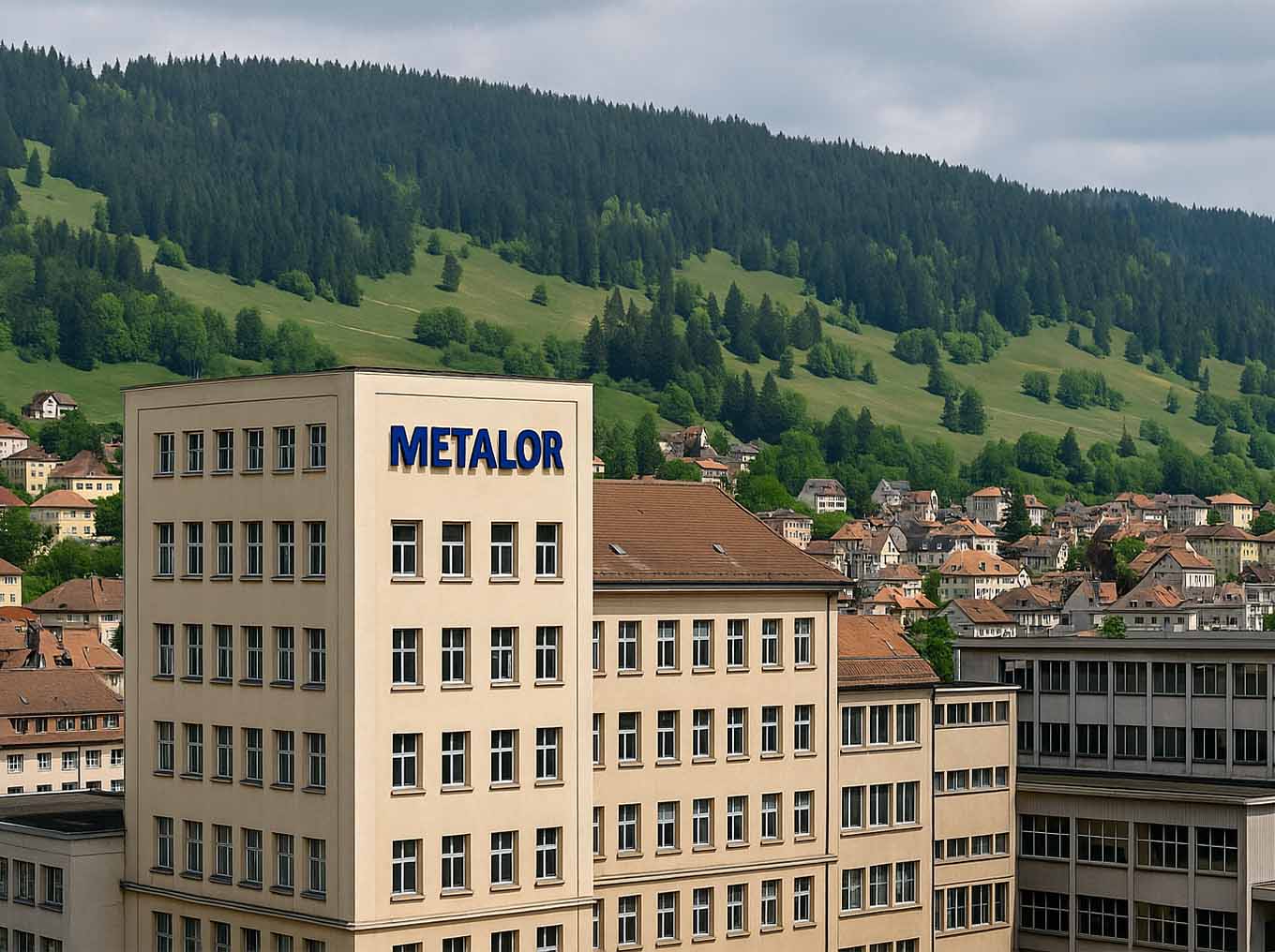
Golden Alchemy: Switzerland’s Refining Legacy & the Tariff Shock
This article explores Switzerland’s dominance in gold refining, the sudden U.S. tariff shock, and how BRICS nations and alternative hubs could reshape the future of the global gold trade.
Switzerland is the gold-refining capital of the world - despite having zero gold mines of its own. The nation’s reputation rests on its precision, quality, and neutrality. According to BullionMax article, A History of Swiss Gold: Refining, But Not Mining:
“Switzerland’s big-four refineries can pretty much handle the entire world’s annual gold production. Every year.”
These “big four” - Valcambi, PAMP, Argor-Heraeus, and Metalor - produce bullion of unmatched purity (99.99%) and are trusted by global markets. Valcambi alone can refine 1,500 metric tons annually, and produces over 6.6 tons of bars and coins daily, according to BullionMax.
The roots go deeper: Metalor’s story begins in 1852 in Le Locle a small french village in western Switzerland that I've actually visited; by 1934, it became the first Swiss refinery on the London Good Delivery List, anchoring Switzerland’s global dominance.
This dominance is built on trust and infrastructure: iconic names, “Good Delivery” accreditation, and links with major bullion markets like London, New York, and Dubai.
The 39% Tariff: A Sudden Blow
On July 31, 2025, the U.S. Customs and Border Protection issued a ruling: 1-kilogram and 100-ounce Swiss gold bars would now attract a 39% tariff - a surprise shock, since those bars had long been exempt.
Impacts were immediate:
- Gold futures spiked, shooting to an intraday record of $3,534/oz.
- Swiss exports worth $61.5 billion over the past year now face steep duties - translating into an estimated $24 billion in tariffs.
Christoph Wild, president of the Swiss Association of Precious Metals, warned bluntly:
“With a tariff of 39%, exports of gold bars will be definitely stopped to the U.S.”
Economists estimate 7,500 to 15,000 Swiss jobs across precious metals, watchmaking, and precision tools could be lost.
Global Ripple Effects & Market Disruptions
Switzerland’s refining role is central to the COMEX futures market, which assumes seamless imports of physical bars. Supply chains are scrambling, while some refineries have paused or slowed U.S. shipments, citing classification uncertainties.
Meanwhile, futures markets are growing jittery, and alternate hubs like London are rising in prominence.
Swiss firms are exploring shifts: UAE (with only a 10% tariff) is emerging as a possible new refining base for re-export to the U.S., according to The Times.
Who Fills the Swiss-Sized Hole?
With Switzerland stalled, could BRICS nations, China, India, Russia, South Africa, Brazil, step into the gap?
- China & India are already major bullion buyers and have burgeoning refining infrastructure.
- The BRICS bloc has in recent years promoted de-dollarization and alternative economic alliances - gold refining could become a geopolitical tool or weapon. With neutral Switzerland being neutered, who will step up and begin refining the world's gold?
Historical precedent suggests yes: in the 1990s and 2000s, a wave of “Eastward shift” in refining began. As Grant Angwin noted in A Journey Through 25 Years of the Gold Refining Industry & The Shift to the East:
“Most investors and mining companies in the ‘Western World’ are completely unable to see the long-term ramifications of the Far Eastern involvement in the gold share market.”
The tariff crisis could accelerate that shift. If BRICS refine more gold, route it to China or Dubai, and challenge COMEX settlement norms, we may witness a new era.
What’s Next for Switzerland & the Industry?
Short run: Swiss refiners will lobby, seek tariff exemptions, or re-route through lower-tariff hubs. Production might slow; infrastructure may idle - for now.
Medium run: A restructuring might occur. The country could focus on higher-value services: assay, compliance, elite coins, or branding - beyond low-margin bullion.
Long run: Swiss prestige and neutrality remain powerful. If trade tensions cool, structural recovery is possible. But BRICS hubs may have established new footholds.
Conclusion: A Turning Point or an Opportunity?
Switzerland’s gold refining legacy spans centuries - from Le Locle to Ticino to global markets. Today, its dominance faces a harsh test.
The 39% U.S. tariff threatens to clip delivery chains, cost jobs, and shake investor confidence. But markets adapt fast. BRICS refiners, alternate hubs, and shifts in geopolitical economics may reshape the global gold map.
Neil Welsh, head of metals at multiasset brokerage Britannia Global Markets, said in a note, published in Gold is flying higher — a report of gold-bar tariffs is doing the trick by Barbara Kollmeyer, that,
“The decision disrupts the established global trade flow, which traditionally involves large bars moving between London, Switzerland, and the U.S.”
This disruption is real - but gold markets are resilient. We’re watching the latest chapter in a centuries-old story of power, wealth, and opportunity.
Latest Insights
Recent Highlights from Our YouTube Channel
Comprehensive reviews of current market dynamics and the latest trends influencing the future of investments.
